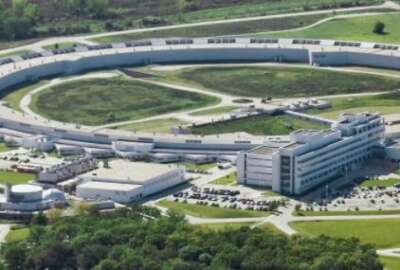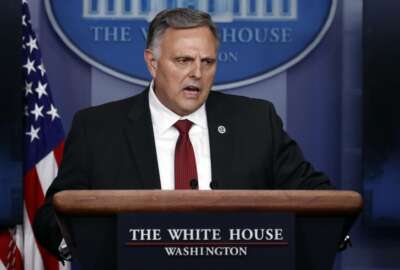
SBA’s 2020 pandemic transition, from big to huge, without flinching
If any federal agency was in the spotlight at the beginning of the pandemic, it was the Small Business Administration. While SBA employees, like so many, made the...
If any federal agency was in the spotlight at the beginning of the pandemic, it was the Small Business Administration. While SBA employees, like so many, made the swift move to maximize telework, they were simultaneously tasked with administering a trillion-dollar loan program.
But even before the CARES Act was enacted in late March, the SBA was already engaged in disaster support, as COVID-19 had helped kick into high gear the agency’s EDIL, or Economic Injury Disaster Loan program. They were being deluged in the midst of that telework transition.
“As a consequence of those three events, needless to say, each of those days and nights and time is indelibly linked into my brain on that,” said Sanjay Gupta, SBA’s Chief Technology Officer, on Federal Monthly Insights — The Future of Work.
It was important to move fast, as Gupta wanted to ensure SBA’s continuity of business operations, in a disaster office that usually has 800 to 1,000 people.
“Six months into the global pandemic, now, we are upwards of, just in the office of disaster assistance, probably 10,000 to 11,000 folks, and we’re still continuing to ramp up,” Gupta said on Federal Drive with Tom Temin.
Gupta said in the past, SBA certainly had deployed new technologies, with an adoption rate that was what might be expected. But since the pandemic’s dose of reality hit, the adoption rate of new tools and solutions was nearly immediate.
“I think part of the factor is because each of us was, if you will, motivated to adopt it, because it helped us do our jobs better,” Gupta said.
And something else was at work, as has been the case with so many agencies that have had success in these less-than-ideal times: Being prepared.
“We had migrated to the cloud in 2017, and that was the foundation that we were using to enable this telework. Number two, we had already started implementation of some secure access through internet, using cloud-based tools. And we accelerated the implementation of those tools that allowed our staff to connect to the SP-network in a secure manner, using the Internet, but still being able to secure our environment and the work that they were doing,” Gupta said
As perhaps thousands of federal employees have come to use Virtual Private Networks as they work from home on laptops, Gutpa said SBA’s use of an SP-network was a replacement for VPN.
“Since it was cloud based, it allowed us to ramp up very quickly. So a bulk of our surge in staffing is utilizing this solution, as opposed to the traditional VPN solution. We also improved our VPN solution, not to say that we did not double it and we’re not using it. But we realized that the speed of transition and the performance, we would get through this was much, much, much better from a user experience and performance and a cost perspective,” Gupta said.
The rapid rate at which SBA administered the Paycheck Protection Program and the EDIL, coincided with nearly a thousand-time increase in the incoming traffic on www.sba.gov. SBA was able to scale up and handle the unprecedented increase because it was operating in a cloud-based environment and totally embracing teamwork.
“In full candor and disclosure, we worked with our partners. We use the two primary cloud service providers that are market dominant. And each of those partners, we work behind the scenes to say, look, we do not know, in fact, I’ve done some modeling, to say what we may be looking at from a projected standpoint, the kind of traffic you might be expecting. It was just a model. But nonetheless, it allowed all of us to sort of look at that model and say this might be the case we’re dealing with. So we worked with our partners, hand-in-hand, so they — behind the scenes — could do whatever they needed to do to support us. So yes, it was a collaborative effort,” Gupta said.
Copyright © 2025 Federal News Network. All rights reserved. This website is not intended for users located within the European Economic Area.
Peter Musurlian is a producer at Federal News Network.
Follow @PMusurlianWFED





